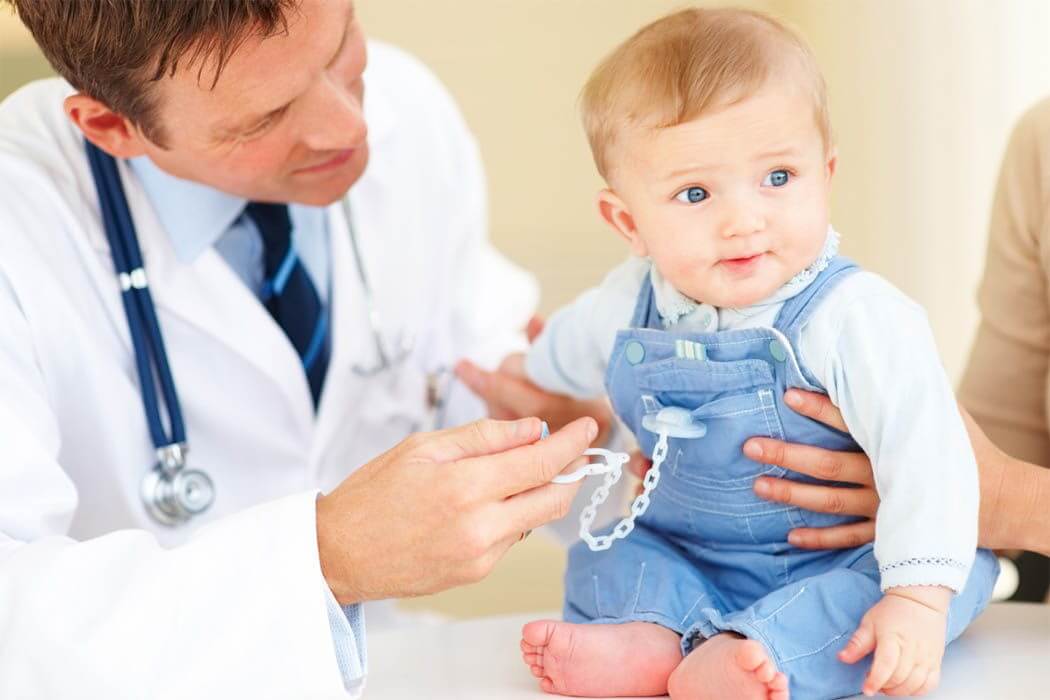The baby was born and from the first days surprises and pleases his parents. Mom and dad eagerly peer at the baby - what new things can he do now, what changes have taken place in him. Children in their first year of life change quite rapidly. Therefore, it is not surprising that parents are interested in whether the baby is developing in a timely manner, whether he is keeping up with his peers, and whether his development (physical and emotional) fits into generally accepted norms. Many books and articles have been written about this. The authoritative children's doctor Evgeniy Komarovsky talks a lot and in detail about the development of babies month by month.

Newborn
Your baby is considered a newborn from the moment he is born until he reaches the age of 28 weeks. Four calendar weeks- this is exactly the period nature has allocated for the formation of basic skills. During this period, the little person’s senses are improved, with the help of which he will study the world around him. For now, he sees only blurry spots of varying brightness; the newborn will learn to focus his vision later. Hearing at birth is somewhat reduced, but already on the 3-4th day the baby begins to hear the world in the same way as adults do. He distinguishes tastes well (bitter, sweet, sour), his sense of touch is quite developed, so tactile contact is a very important element of understanding the world in the first weeks of independent life.
The daily routine of a newborn in the first month plays a big role for further development. How healthy and strong the little one will grow depends on how parents organize nutrition, bathing, walks and sleep. The baby just seems tiny and helpless. His skills are due to nature itself, and he can do not as little as his parents think. A newborn up to 1 month demonstrates reflexes that are unique to him; as he grows older, they disappear as unnecessary. Parents can easily assess basic reflexes on their own:
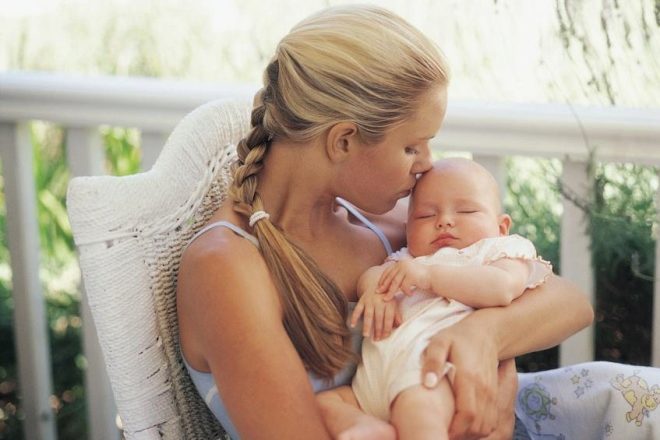
Grasping reflex. Bring your index finger close to your baby's palm, he will definitely grab it very tightly.
Hug reflex. Place the baby on a hard surface (for example, on a changing table), and sharply hit the surface of the table with your palm. The loud sound and vibration will cause the baby to make movements similar to the movements of an adult when hugging - first the baby will bend back and spread his arms wide, and then he will return them to the position at the chest.
Crawling reflex. From a lying position on his stomach, the baby will reflexively make movements that are used when crawling.
Step reflex. Take your baby under your arms and hold him upright. If you lightly rest his legs on a hard surface, he will push off with them and spring back. If you slightly tilt the child’s body forward, he will take several “steps” with his feet.
![]()
Height and weight
During the first month of life, the average child, be it a boy or a girl, gains an average of 450 to 700 grams in weight and 1.5-2 centimeters in height. These parameters are very individual, according to Komarovsky, and therefore you should not compare your child with others only according to these criteria.
In the first month, parents should pay special attention to developing the baby’s reflexes and establishing a clear daily routine. Care for a newborn should be based on the principles of creating optimal conditions for the development of its immunity (bathing in cool water using the Komarovsky method, walking, air temperature in the room no more than 20 degrees, indoor air humidity within 50-70%).

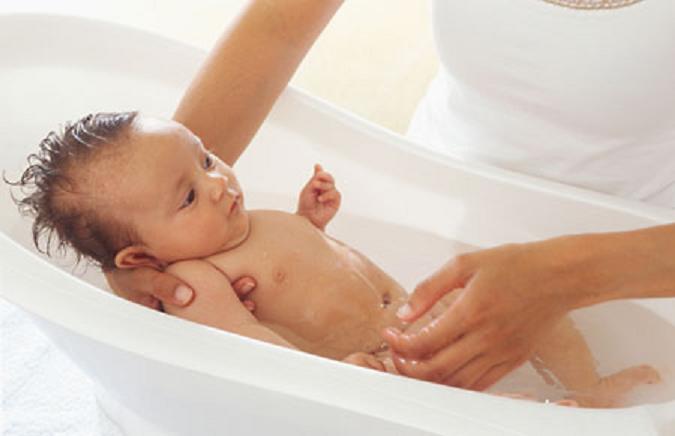
1 month
The neonatal period is over. The baby's muscle tone decreases somewhat, and movements of the arms and legs become less constrained, but more chaotic. The umbilical wound has healed. The child still sleeps a lot - from 17 to 20 hours a day. At this age, the average child should be able to hold his head for a short time while lying on his stomach. His vision is improving, the little one can already fix his gaze on a stationary large and bright object for several seconds.
Developing emotional sphere- the baby already recognizes his mother, though not yet visually, but by smell, touch and voice. But he already knows how to enjoy her, arching his back and spreading his arms (hug reflex). The baby makes his first attempts to imitate sounds.
Height and weight
Girls (born weighing more than 3 kilograms) at 1 month weigh on average 4150-4400 grams, their height is 53-55 cm. Boys weigh 4400-4900 grams, their height ranges from 54-56 cm.
At this age, not only swimming in cool water is useful, but also swimming. Evgeny Komarovsky advises transferring the child to a large bath. If parents are afraid to let their one-month-old baby swim with little support, you can buy a special swimming ring. It comfortably fixes the neck and gives the child the opportunity to swim and make flips in the water.

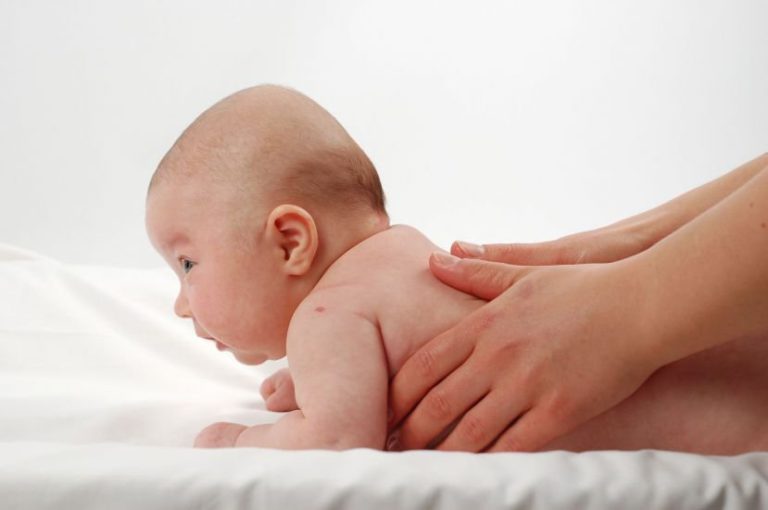
2 months
Dramatic changes have occurred in the child’s appearance: he no longer resembles an alien creature, his face has acquired cute features, in general the baby has become much calmer, his movements are no longer so sharp and chaotic. The baby sleeps about 19 hours a day. Sleep becomes more sound. The baby can focus his gaze not only on stationary objects, but also on his mother moving around the apartment.
When placed on the tummy, the baby holds the head for about 15-20 seconds. If you put it on its side, it turns over on its back on its own. Many babies at 2 months begin to consciously smile from ear to ear at people they know well (mom, dad). The little one makes a funny noise, singing vowels. He learned to determine where the sound was coming from and turn the head in that direction.
Height and weight
On average, a two-month-old baby gains about 800 grams in weight and about 2 centimeters in height per month.
Monitor skill development closely at this age. If a two-month-old baby does not try to raise his head and hold it at all, does not respond to sounds, does not show a reaction in response to his mother’s kind words, this is a reason for examination by specialist doctors (pediatrician, neurologist, ENT).
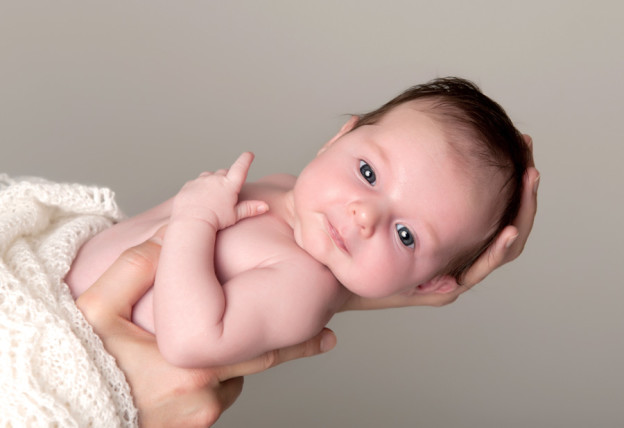
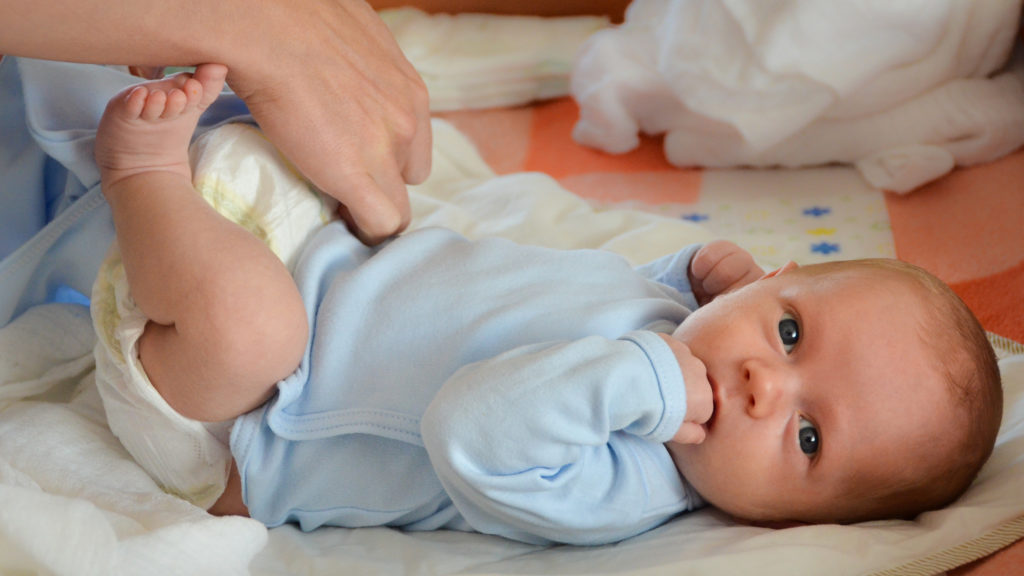
To find out whether you should take your baby swimming in the pool, see Dr. Komarovsky’s program.
3 months
A three-month-old toddler is already a real handsome man, due to the growth of subcutaneous fat, his body becomes plumper, dimples appear on his cheeks (not for everyone). The baby has most likely already learned to roll over from his back to his tummy and lean on his forearms, lying on his stomach, he rises with his whole body, leaning on his arms. The child reaches out to objects that are interesting to him, and if he manages to grab them, he immediately puts them in his mouth.
He distinguishes all primary colors, he likes toys and pieces of fabric that feel different to the touch, as his tactile perception improves.
Height and weight
The average weight gain per month is about 800 grams, and the average height gain is 2.5-3 centimeters.
Educational games will already be perceived by the child as games, that is, the process of the game itself becomes interesting to him, and therefore it’s time to experiment with rattles, rattles and squeakers.
Gymnastics for physical development should be daily and mandatory, you can add a massage aimed at strengthening the muscles of the back, neck, and abdomen.
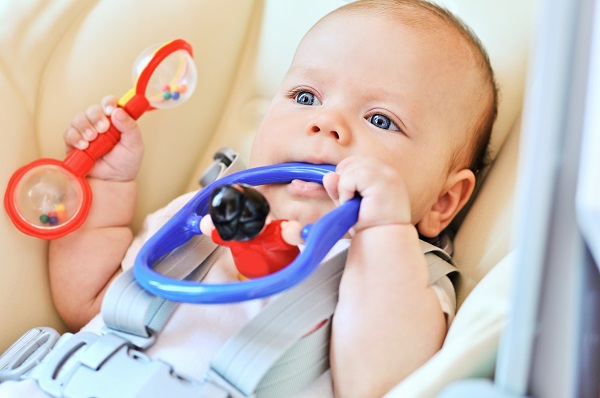
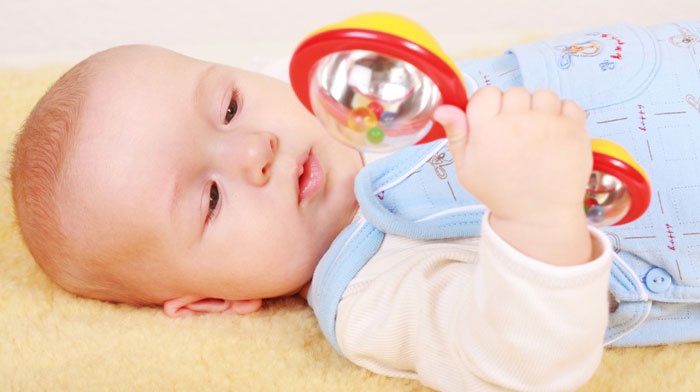
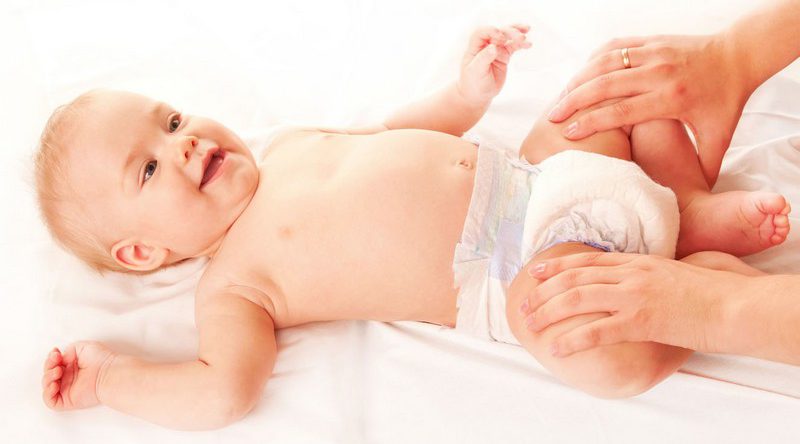
4 months
Unconditioned reflexes are fading away, some have already disappeared completely, for example, the Moro reflex, which is popularly called the hug reflex. The muscles of the arms are no longer toned, but the legs may still remain tense, and this should not frighten parents. The digestive system is developing rapidly, due to which many children at this age lose such an unpleasant and painful physiological phenomenon as infant colic.
The baby is already in dire need of emotional communication, he actively hums, voiceless consonants are added to vowel sounds, he willingly smiles consciously, some even begin to laugh, the child listens to music with interest.
The baby sleeps about 15 hours a day, periods of wakefulness can already be about 2 hours, and this time must be used to the maximum - Give your baby a massage twice a day, walk with him at least twice a day, and conduct developmental activities.
Weight and height
In the fourth month of independent life, the baby should gain about 700 grams in weight and about 2.5 centimeters in height.
It is necessary to trim your baby’s nails more often to avoid injury, because four-month-old babies’ nails and hair begin to grow at an unprecedented pace.
In addition, parents should more often encourage the individuality of the baby; according to Komarovsky, at this age he already perfectly distinguishes himself from his environment and begins to realize himself as an individual.
5 months
Emotional communication comes first. The child babbles, hums, and sings very expressively. Laughter and smile are already 100% conscious. Some children (though not all) can sit with their back supported by the end of the fifth month. Almost all children at this age master new interesting view leisure time - lying on their backs, they pull their legs up and without difficulty take their heels into their mouths.
The baby recognizes faces perfectly, already divides people into acquaintances and strangers, looks at himself in the mirror with pleasure, and shows strong conscious anxiety when his mother leaves the house for a while. Coordination of movements is already almost perfect - the baby, without taking his eyes off the object, can reach it with his hand, grab it and immediately put it in his mouth. Now the baby can play independently for 5-15 minutes.
Height and weight
A simple method will help you understand whether everything is in order with these indicators: the birth weight of the baby should be multiplied by 2. The result will be an average weight of five months. The increase in the fifth month is about 700 grams. The baby gains 3 centimeters in height.
There can be very good reasons for introducing the first complementary foods, since the lack breast milk, small weight gain (this should be diagnosed by a pediatrician, not a caring grandmother), frequent stomach problems and excessive regurgitation.
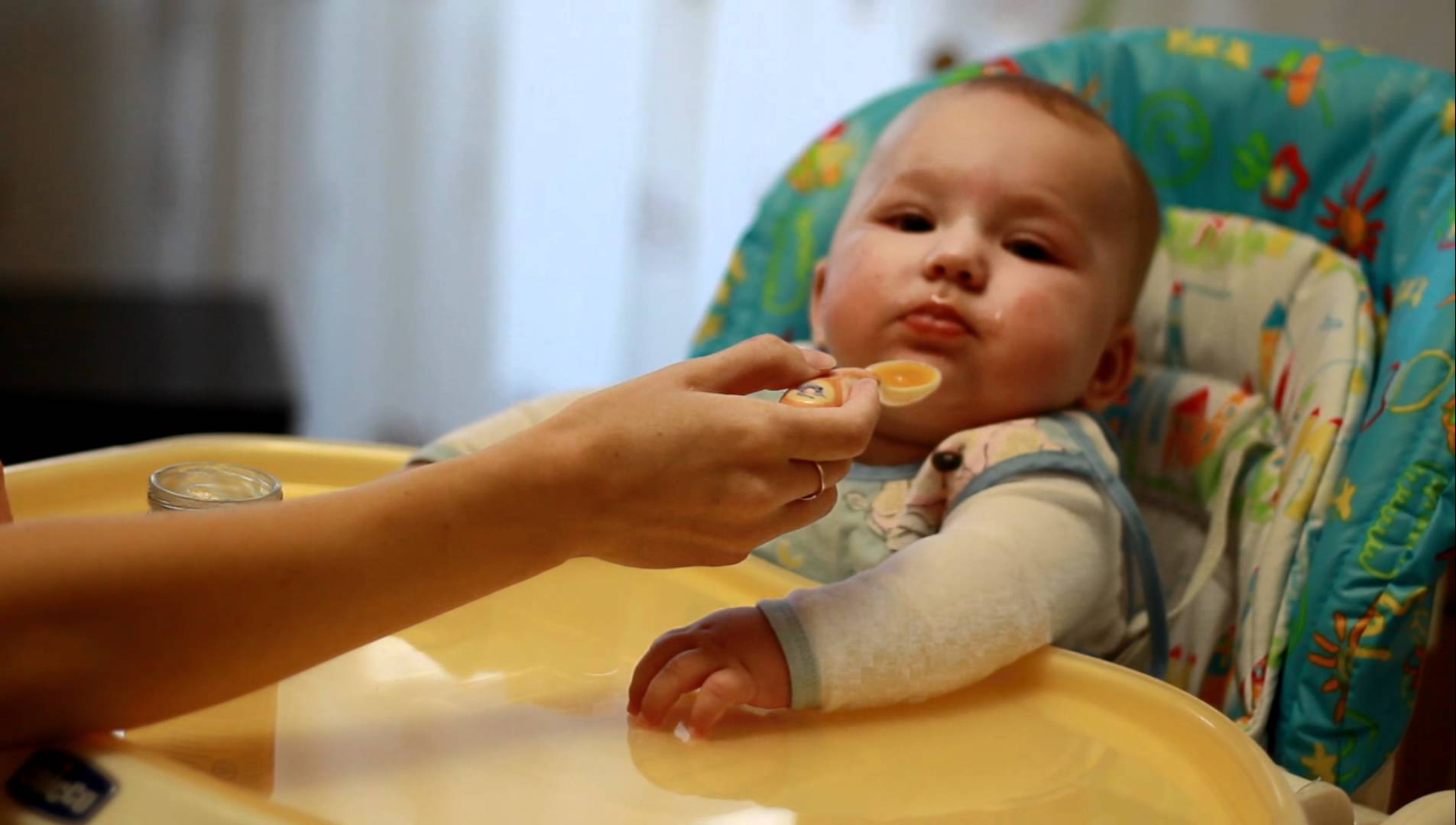
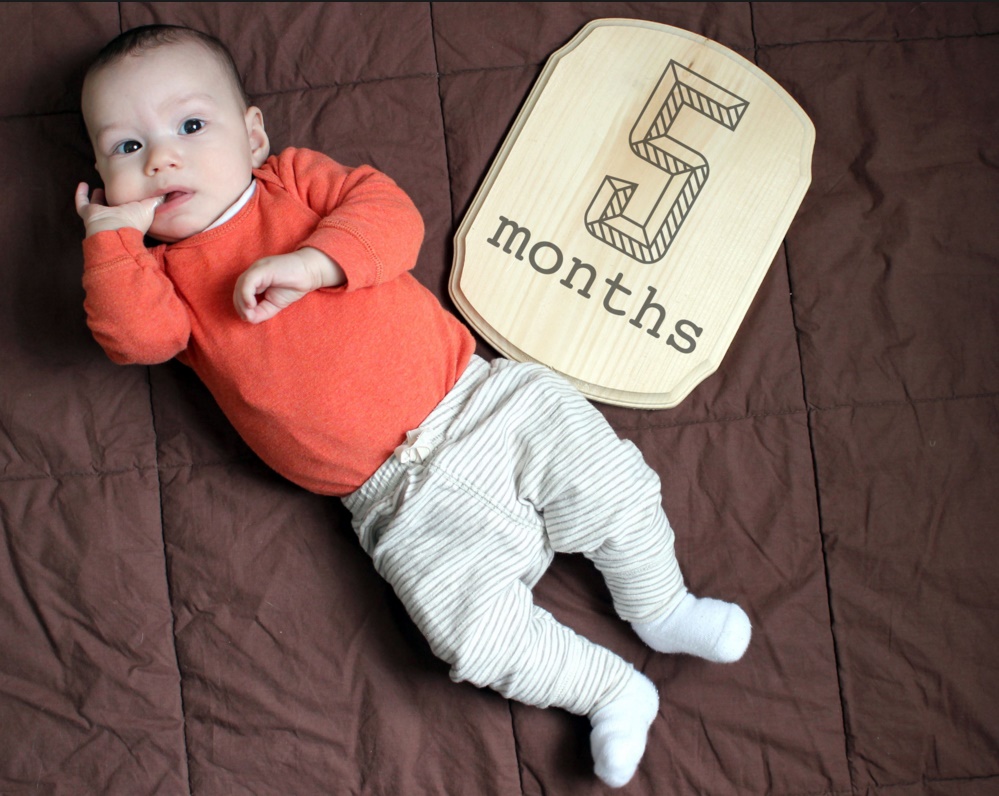
6 months
Muscles develop at a rapid pace, so many children can sit without support by six months; some begin to make their first attempts to crawl. The child generally becomes incredibly active; he needs an eye and an eye. Saliva production increases, and many babies' first teeth (usually the lower incisors) emerge.
Coordination of movements is improving, now the baby not only reaches out to an interesting toy and grabs it, but can quite easily pick up an object that has fallen out of his hands. The little one is moving forward by leaps and bounds in mental development, he already perfectly builds cause-and-effect relationships: if you shake the rattle, it will rattle, if you throw it, it will fall, if you scream, mom will come, if you scream loudly, mom will come running, and with her dad and grandma.
The child reacts to his own name, smiles in response, he listens attentively to the speech, and at familiar words he noticeably perks up, throwing up his arms and legs. The baby tries to combine different sounds into syllables. While there is no special meaning to them, he is simply trying to make new sound effects, and the process gives the child real pleasure. If a baby is spoon-fed, a six-month-old baby understands perfectly well that he needs to open his mouth wide during feeding.
Height and weight
During the sixth month, the baby on average gains more than 600 grams of weight and grows by 2 centimeters.
If a child has not sat down by six months, parents do not need to force him to sit down. In this case, Komarovsky calls for crawling to be encouraged in every possible way. There are children who learn to crawl earlier than sit, and there are no deviations in this.
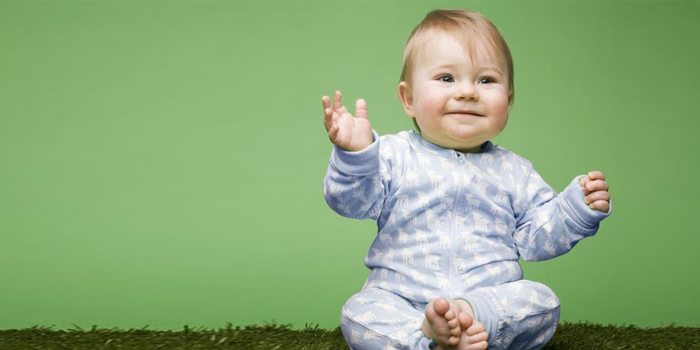
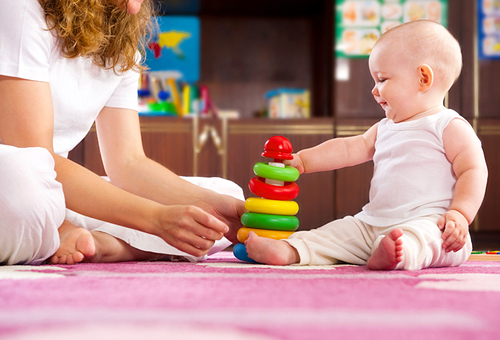
For information about what you should consider when crawling a baby, see the program.
7 months
The baby changes every day. He no longer looks like a helpless creature, most babies at this age sit perfectly, many crawl, some try to stand up, holding on to support. It is interesting that the right hemisphere of the brain develops at a faster pace, and therefore the child will use his left hand more often, but this does not mean that he is left-handed. The baby's vision is developed at a high level; he not only follows moving objects, but is also able to distinguish them at different distances.
The baby actively explores the world, and he does this through objects - he shakes them, turns them over, tastes them, throws them and moves them. The seven-month-old baby eats well from a spoon, is already mastering a mug, and holds a bottle of drink himself.
Weight and height
During the seventh month, the child’s height increases by 2 centimeters and weight increases by an average of 600 grams.
Special attention speech development should be addressed at this age. The baby is already able to not only put sounds into syllables, but also use certain syllables in specific situations.
On a walk, while playing, it is advisable to clearly name the child everything he sees, pronounce the names syllable by syllable. This way he can quickly call a spade a spade. Introduce complementary foods according to the schedule. A child of this age no longer needs night feeding.
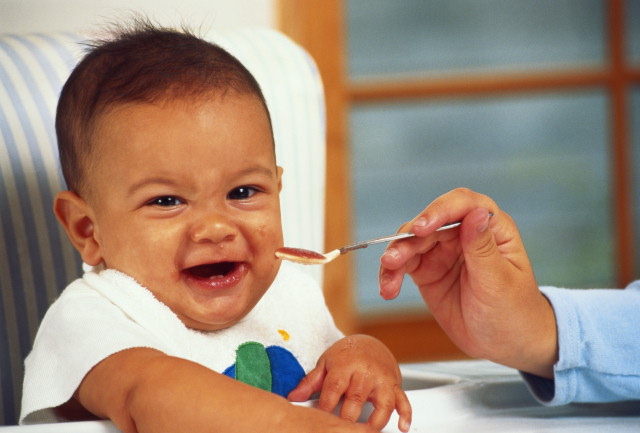
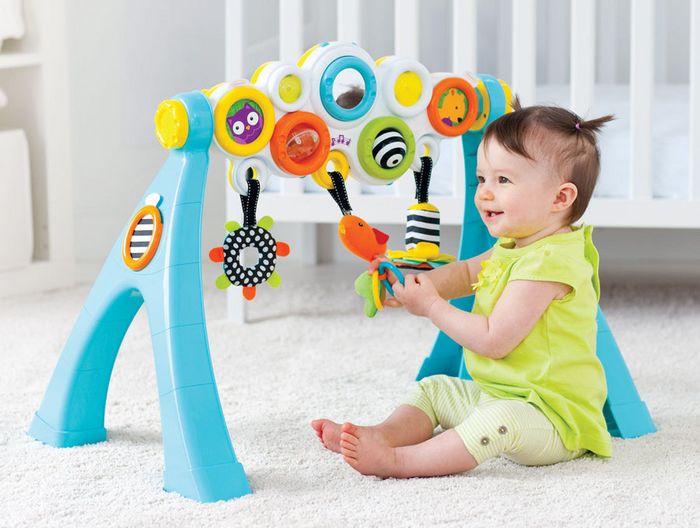
8 months
From a lying position, the baby can sit down and lie back down. At this age, toddlers can generally roll over in a variety of directions. Some kids already know how to play “okay”, and almost all have learned to pick up small objects with their fingers (fine motor skills are developing). With particular delight, children at 8 months recognize themselves in the mirror and in photographs. They have already learned to take their socks off their feet.
Babies of this age begin to be afraid of loud noises, and therefore may cry if they turn on a vacuum cleaner or blender. The baby understands praise. He strives for socialization, reacting animatedly to other children, trying to establish contact with them.
Height and weight
The growth rate is slowing down somewhat. During the eighth month, the baby gains an average of 500 grams, and his height increases by 1.5 centimeters.
If an eight-month-old baby does not yet have teeth, there is no need to panic, everything has its time. At this age, in general, the gap in the development of different children increases. Some already know how to stand with support, others are just trying to sit down.
If the child is healthy and gaining weight well, Komarovsky advises not to compare his development with statistical norms, but to take into account his individuality.
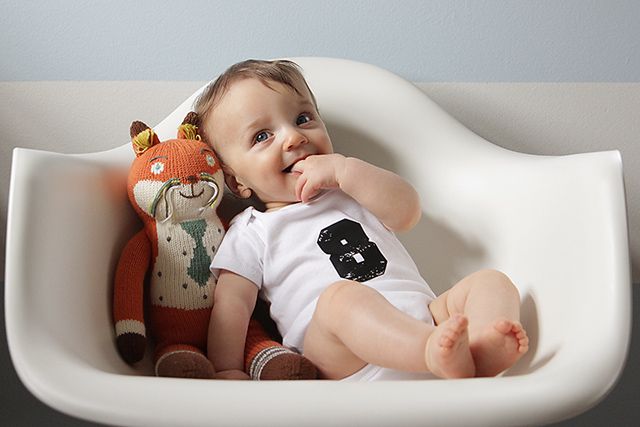

You can find out the doctor's opinion about whether you should use a walker from his program.
9 months
The baby is already crawling confidently. And it doesn’t really matter which way he does it - on all fours or on his belly, both options are the norm. The baby can sit, and some are quite good at standing in the playpen, holding on to the sides. In the game, the little one already expresses his preferences - he chooses a certain toy, and not the one that comes to hand, tries to use two toys, knocking them against each other and looking for other uses for them.
You can teach your baby the names of body parts. He will be happy to show them with his finger. At this age, children love to watch their elders and try to copy their actions.
Height and weight
On average, a child gains about 500 grams per month and grows by 1.5 centimeters.
The child has become very inquisitive and active; he can begin to explore pieces of furniture, drawers and chests of drawers. This is the time when the risk of receiving a variety of injuries increases - bruises, hematomas, burns, cuts. Parents should be more attentive and also remove all potentially dangerous objects from their child’s reach.
1 year
This is an important period that sums up everything that a baby has learned before the age of 1 year. All muscle groups are well developed; many children have up to 8 teeth by the age of one year, although some have only 1-2. The baby can already squat down and get up from this position without the help of adults; he can overcome small heights - he can, for example, climb onto a chair or sofa by himself. The average vocabulary is about 15 simple words. Many one-year-olds are great at assembling and disassembling a pyramid or tower of colored cubes.
Long-term memory is improved - the baby remembers what happened yesterday and even the day before yesterday. By the age of one year, a child can use cutlery well and drink from a cup, as well as carry out simple instructions from parents (serve something, put something somewhere).
Height and weight
The child's weight has tripled since birth, and his height has increased by 1.5 centimeters on average over the past month. From this age, the baby will begin to grow and gain kilograms much more slowly.
See Dr. Komarovsky’s broadcast below for more details.
Good day, dear readers! Today I want to continue talking with you about our newborn babies! I remember how I consulted with relatives about raising my baby - after all, I became a mother for the first time. What’s interesting is that the advice received from relatives was very different!
When your baby is two months old, you will notice that he has become completely different. Compare photos of the baby from the maternity hospital and his appearance at the moment - he doesn’t look like a little “alien” from the maternity hospital. His facial features were transformed, his movements became more confident, and the baby himself became calmer.
On scheduled inspection pediatrician will weigh and measure the baby to determine whether he is not lagging behind his peers in physical development.
It is considered the norm, If:
- girl weighs 3.9-6.6 (boy: 4.3-7.1) kg;
- baby's height is 53-61.1 (boys: 54.4-62.4) cm;
- girl's head circumference 35.8-40.7 (boy: 36.8-41.5) cm.
However, during the examination, the doctor takes into account other factors:
- at what time the child was born;
- does he have chronic diseases;
- and so on.
Therefore, if a child’s height/weight does not correspond to the norm, this does not mean that your baby is defective or is not developing in a timely manner. Each baby is individual, so remember that generally accepted norms often do not have much meaning.
The baby's daily routine also changes. Now the baby sleeps less than before. In total, the number of hours of sleep is equal to 19. Moreover, twice a day a newborn can sleep up to three hours in a row! At night he may not wake up at all. Sleep becomes more sound.
At two months of age, newborns often have problems with bowel movements. Babies who feed on mother's milk can have bowel movements up to 8 times a day! But babies who are switched to dry formulas from birth often begin to suffer from constipation.
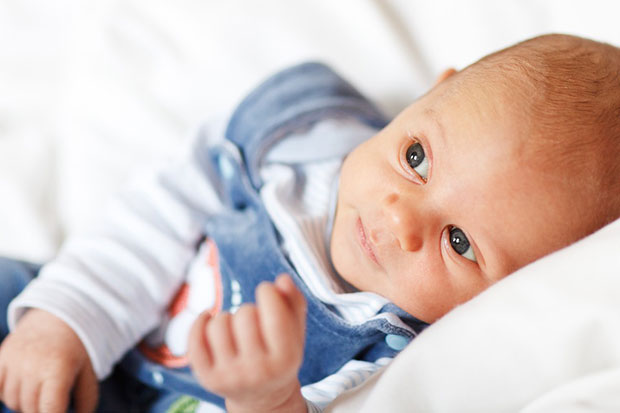
Pay attention to your baby's behavior; if he often wiggles his legs and cries, and his tummy has become tight, he may have colic. This is a common occurrence in children of this age.
2. Peculiarities of baby development
Over time, the baby improves his skills, matures, grows stronger, and gains strength. Now, in addition to unconditioned reflexes, he has learned to consciously look at the world.
At the age of two months, your baby is able to concentrate his gaze on a specific object and can even follow his mother as she walks around the apartment (even at a month old, it is extremely difficult for a baby to focus his gaze on objects in motion).
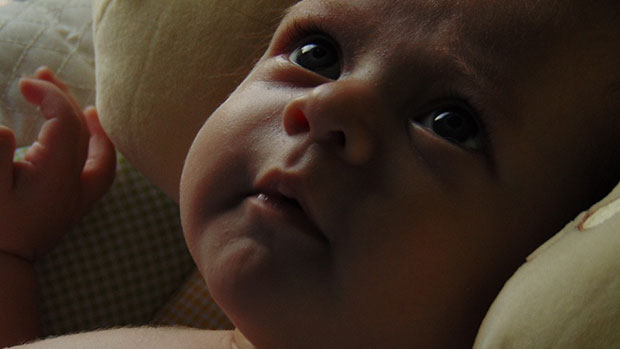
So what should a baby be able to do at the age of two months? Firstly, everything that I learned in the previous month of my life.
Moreover, he has now acquired new skills:
- learned to hold the head for 15 seconds;
- knows how to roll over from side to back on its own (and just yesterday the child would have been lying in the position in which you left him);
- smiles from ear to ear (of course, such facial expressions are more like an admiring “o”, but you, mother, will immediately recognize that the baby is laughing);
- reacts to the touch of parents and other people (moreover, mother’s hugs cause a slight smile in the baby, and the hands of strangers can provoke the baby to cry);
- hums, draws out vowels (may even try to sing);
- listens to different sounds (and can even begin to determine from which side the ringing is coming);
- cries in order to express his dissatisfaction with something (for example, he wants to be fed or asks in this way to change his dirty diaper).
Of course, a baby can learn much more in the first months. To do this, you need to practice with it more often, and various games will help you with this!
3. Educational games
Young parents know that little man I’m not yet ready for serious instructive lessons. Nowadays it is much more correct to develop the baby’s skills with the help of children’s games.
In order to gain new knowledge, you can offer your child:
- reach for toys suspended half a meter above his head (choose bright and beautiful figures so that the baby wants to reach them with his hands);
- watch the ringing rattle, which you move from side to side (this will help the baby develop vision and learn to concentrate his attention on a specific object);
- repeat the vowels after you (just under no circumstances force your baby to sing if he is not in the mood).
Now the baby is very inquisitive, so he will really enjoy exploring the surrounding area.
Take the baby in your arms and walk around the apartment with him, naming every object he comes across. Do the same on the street. With systematic repetition, the baby will begin to remember words and associate them with objects.
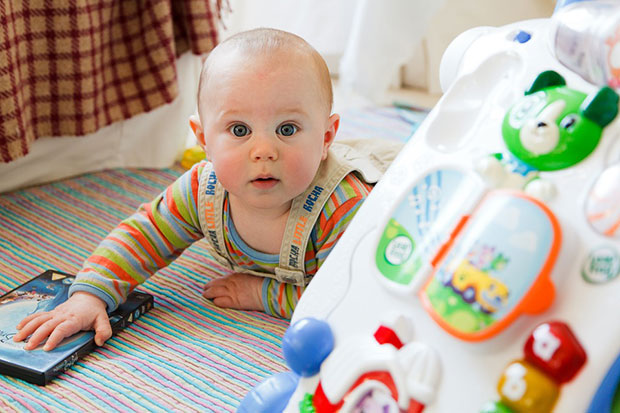
It is also very useful for the development of tactile sensations to spend with the baby finger gymnastics. Such activities stimulate brain activity. There are many video tutorials on the Internet on how to do the exercises correctly. In general, you can purchase a whole development manual fine motor skills– the book will be useful to you in the future!
You can dream up! Our grandmothers used ingenuity when they raised us: they let us touch objects different forms(pasta, buttons, cutlery), read newspapers out loud, let them pull their hair. Now any activity will benefit the baby!
But most importantly, do not leave your child unattended! Now he began to put into his mouth everything that falls into his hands! Be careful!
Well, well, I will say goodbye to you, but not for long. If you found this article useful, recommend it to your friends. And subscribe to my updates. Bye bye!
The birth of a child is an absolute miracle of nature, which is always looked forward to loving parents. As a rule, during pregnancy, each of them tries to read as much literature as possible regarding the care and upbringing of a newborn. And since it concerns the most precious thing in this life, a child, then the study of all issues must be approached responsibly and scrupulously.
Where to start
And you need to start with arranging the children's room and sleeping area. According to Dr. Komarovsky, a newborn baby needs a bright, well-ventilated room. Of course, we are not talking about constantly opening the windows in the room when the baby is sleeping there. Even in the warm season, the child should be taken out of the room while airing. And ventilation must be arranged every time before going to bed.
The necessary furniture in the nursery should include a bed and a changing table. Naturally, furniture must meet all safety requirements and be environmentally friendly. You should choose a special crib mattress for newborns. As a filler in a pillow, mattress and blanket, avoid the presence of down and feathers, which can cause allergies in a child. Bedding should also be made from natural fabrics without poisonous bright colors.
Komarovsky video: Your newborn
BE SURE TO WATCH THIS VIDEO IN FULL.
Organization of a regimen for a newborn
As Dr. Komarovsky says, a newborn first only eats and sleeps.
These are the two most important things in his life for the next few months. It was said above how the baby’s sleeping place should be organized, and as for nutrition, you need to know some features.
Waiting for the birth of a child loving mom and dad are trying to prepare well and find out all the important issues in this case. Caring for a newborn is a complex and incredibly fascinating topic. Dr. Komarovsky dedicated many of his programs to her. The future health and well-being of the baby depends on how correct the development is in the first months of life. Therefore, it is necessary to accurately determine what development is considered normal.
Dr. Komarovsky especially carefully described the development of the newborn for parents. As the pediatrician himself says, for a newborn the main activities in the first months are sleep and nutrition. Until three or four months, nothing more is needed. Therefore, the responsibility falls on parents to ensure the correct daily routine. The child will learn what time he eats and sleeps. Then development will be normal and productive.
However, in the first months it is important to monitor certain behavioral characteristics of the baby and her physical condition. The most characteristic manifestations in this case include regurgitation, abdominal cramps and constipation. Proper nutrition and sufficient physical activity able to protect against such manifestations. But what is the essence of competent care? To do this, it is necessary to consider the monthly development described by Komarovsky. Conventionally, two main periods can be distinguished: the first and second half of the year of life.
First six months
- First month. At this stage, Dr. Komarovsky asks you to pay attention to the formation of reflexes. Immediately after birth, a newborn should have a sucking and grasping reflex, push off from the support placed on the legs and try to crawl.
- Second month. At this age, a newborn can remain active during the day for 15 minutes per hour. Movements become less sharp, the gaze is fixed on objects. The baby begins to pull objects into his mouth and tries to imitate sounds from the outside.
- Third month. Further development involves sleeping three times a day, the appearance of signs of a smile, and recognition of parents. A characteristic “humming” appears and the head turns towards the sound source.
- Fourth month. Adds stamina, playing for 2 hours at a time, turning over without assistance. The ability to distinguish oneself from the surrounding world arises.
- Fifth month. Particularly important in development. By this moment, the newborn should be able to turn from the stomach to the back, recognize close relatives, control facial expressions, grab and pull toys.
- Sixth month. The ability to sit, respond to one’s own name, and voice the simplest syllables appears. If all this is observed, the development of the newborn can be considered successful.
Second half of the year
- Seventh month. Feature here is the active speaking of a newborn. Naturally, we are not talking about words, but about simple syllables. The child should make attempts to stand up and a desire to learn the properties of surrounding objects. (He shakes the toys.)
- Eighth month. The level of development allows the newborn to stand up, leaning on furniture or the hands of the parents. Crawling becomes fast and confident. Laughter at seven months is also a characteristic manifestation normal development. Simple words The baby should already understand.
- Ninth month. P recognizes space: climbs on furniture, opens drawers and cabinets, looks inside hollow objects. The volume of understood words expands significantly. The kid can show a table, chair, etc. in the picture.
- Tenth month. Understanding of others improves. Even without words, a newborn begins to understand the mood and desires of loved ones. Imitating the behavior of others becomes obvious this month. There are signs that the child is establishing simple cause-and-effect relationships.
- Eleventh month. By now, the newborn should have developed an understanding of speech. In addition, its development allows us to respond to requests and appeals. The answer follows with movements of the head or hands.
- Twelfth month. It is generally believed that at 12 months a child should be walking. But Dr. Komarovsky urges not to worry if this does not happen. The entire sequence described is only approximate. Lag and advance are acceptable situations.
Sometimes it happens that a child noticeably lags behind his peers. You can smooth out the problem using. It is recommended by doctors and helps the baby learn important skills easier and faster.
Who better than pediatricians should know everything about intestinal colic in newborns. One of the most popular children's doctors in our country is Dr. Komarovsky. Young mothers have repeatedly come to see him with questions about intestinal colic in their infants. The relevance of this topic is confirmed by numerous videos and articles released by Dr. Komarovsky over several years.
What does Dr. Komarovsky think about the cause of colic in infants?
Colic is a series of sudden, intense pain attacks that follow each other, causing significant discomfort to the child. According to Dr. Komarovsky, these attacks bother most children infancy and only 30% of young parents do not know any problems with them.
Pain occurs due to increased gas formation in the baby’s intestines when digesting food. The resulting gas bubbles put pressure on the intestinal wall, which causes intense painful attacks. Painful symptoms appear already in the first month of life and go away on their own by 3-4 months, regardless of whether the child was treated for colic or not.
Important! Komarovsky claims that clicking in newborns is not a disease. Increased gas formation is a normal process, indicating the adaptation of the baby's intestines to the digestion of new food.
The nature of intestinal colic in newborns has not yet been precisely studied. According to Dr. Komarovsky, there are two main predisposing factors:
- Overfeeding and excess food intake.
- Overheating of a child due to too much wrapping or being in a heated room for a long time.
In addition to these main two factors, the formation of painful attacks can be affected by:
- Hormonal imbalances in a newborn;
- Poor development nervous system, immaturity of nerve endings due to prematurity, complications during childbirth;
- Weak peristalsis of the gastrointestinal tract in infants;
- Maternal malnutrition;
- Incorrect feeding technique: excessive swallowing of air during feeding.
The simultaneous action of several predisposing factors leads to digestive disorders, the external manifestation of which is colic attacks.
How to diagnose colic

The main symptom of colic is intense, continuous crying. The child suddenly begins to cry for 2-3 hours, more often in the evening or at night, refuses the breast, and does not respond to his favorite toys. The baby cannot be calmed down. The cessation of crying occurs as unexpectedly as it began. After attacks, the child smiles and is in good mood, nothing bothers him.
Important! “Colic” crying occurs against the backdrop of the baby’s overall health: the child eats normally, gains weight well, does not lag behind his peers in development, smiles, and looks healthy in appearance. If there are signs of any disease and unexplained bouts of crying are observed against this background, it is first necessary to cure the underlying disease. In this case, most likely, the crying is not associated with colic, but with the emerging pathology.
Komarovsky says that crying during colic is different from all others. It is special, and a caring mother always distinguishes a colic attack from other pathologies.
How to deal with colic, according to Dr. Komarovsky
Since the exact nature of the attacks of pain has not yet been studied, there are no treatment methods that would be guaranteed to relieve a newborn from colic. There are only a few techniques to alleviate the condition of a baby. This is symptomatic therapy, which in some cases can help.

- Change the feeding regimen of the newborn. Feed the baby only on demand, in the amount of one feeding. There should be at least 2.5 hours between meals.
- If the child is on natural feeding, then you should not supplement him with formula milk.
- Monitor the temperature in the room where the baby is staying. The air temperature should not exceed 22 C, optimally 18-20 C.
- Carry out “air baths” every day: the baby is completely freed from diapers for 10-15 minutes. This hardens the child’s body, improves blood circulation and prevents overheating.
- After feeding, the baby is held in an upright position for several minutes (to allow excess air to escape), after which a pacifier is given. Sucking movements calm the baby, he falls asleep better.
- During an attack of pain, you can offer your child a pacifier. If the baby does not refuse the pacifier, then this will calm him down a little.
- During attacks, you can make light stroking movements along the anterior abdominal wall. Massage movements will facilitate the passage of intestinal gases, and parental warmth and care will calm the baby.
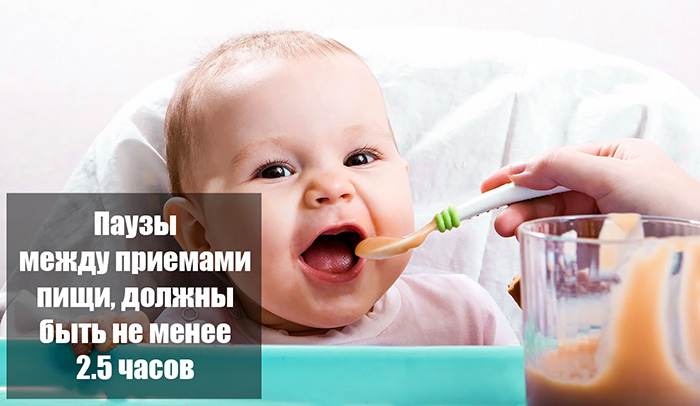
Komarovsky about the nutrition of a nursing mother with colic
- The mother's diet can affect the intensity and frequency of pain attacks, but this does not always help. Dr. Komarovsky recommends eliminating certain foods for a while and monitoring the baby’s condition. If the pain attacks have decreased, then you can continue to stick to the diet. But if the child’s condition has not improved, and colic recurs with the same intensity, then a nursing mother should not torture herself with a diet. Much more important is her well-being psychological attitude and good mood.
Important! If the diet does not affect the condition of the newborn in any way, then there is no need to continue to restrict yourself in nutrition.
- Cow protein, especially fresh dairy products: raw and pasteurized milk, baked milk. Minimize the amount of dairy products consumed.
- Coffee, soda.
- Spices and seasonings.
- Spicy, fried, pickled and smoked foods.
- Canned foods.
- Cabbage.
- Some vegetables: onions, radishes, radishes, garlic, hot peppers.
- Legumes.
- Freshly baked bread.
If the child is on artificial feeding, the mother needs to contact her local pediatrician. If you have colic, it is recommended to change the milk formula; your doctor will help you choose the most suitable one. The doctor will also give recommendations on feeding and calculate the amount of one-time and daily feeding depending on the age and initial weight of the child, in order to prevent overfeeding in the future.
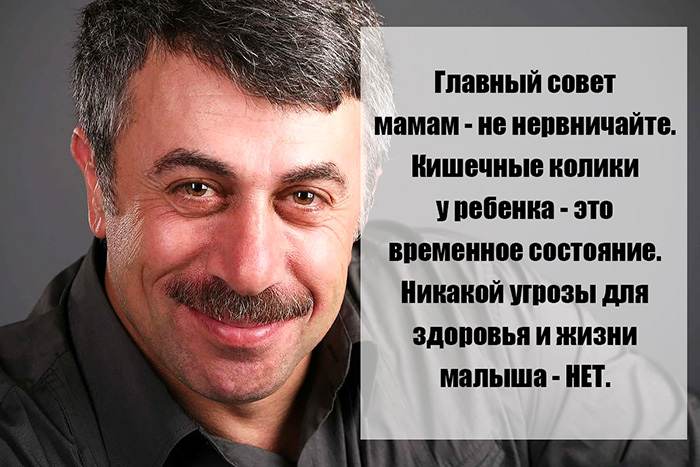
Komarovsky about drug treatment of colic
Doctors agree: take medications for up to 3 months infant It is also contraindicated for a nursing mother: it can harm the baby and disrupt lactation. Komarovsky says that all recommended medications are indicated for children from 3 months of age, when colic already goes away on its own and is not required.



